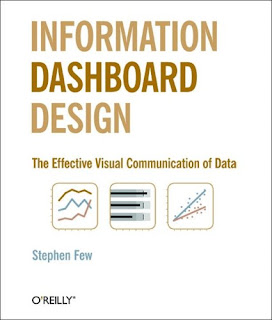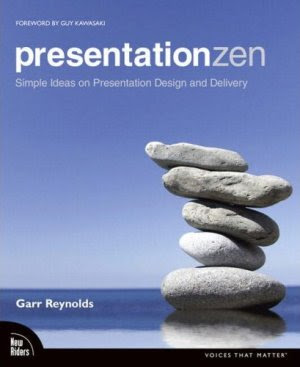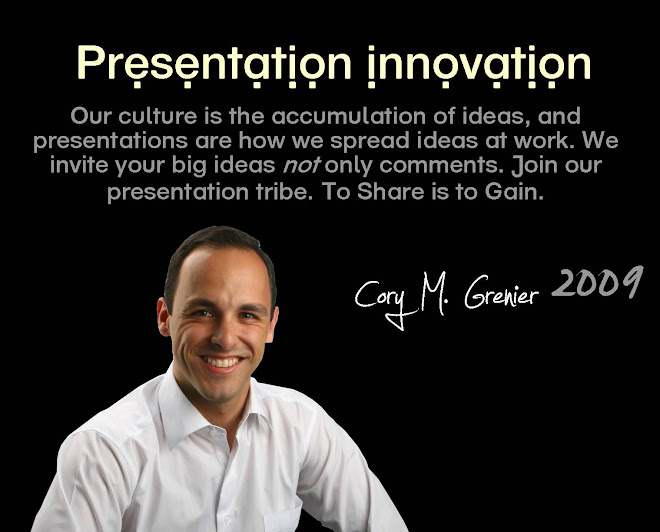Thursday, December 18, 2008
SlideVert: A new Marketing Tool for today's Interactive Audience
Slides + Advertisement = SlideVert
Recently I visited SlideShare and viewed a beautiful 100 slide Keynote PPT Presentation called Thinking of the Future by an IBM Executive named Chirs Sparshott. The presentation was educational, interesting and a very clever use of social marketing. The last few slides subtly promoted IBM's services as the answer to the new technological changes confronting everyday people. The last page had links to IBM's website. In fact, the presentation was a SlideVert. A separate presentation by a different author titled The Brand Gap has been viewed over 400,000 times on SlideShare!
What if we upload a meaningful PPT presentation to SlideShare or on your blog that adds value for the audience with engaging visuals, hard facts and a concrete educational message. But during the conclusion or end credits you provide links to your company's offerings and related resources. Oh yeah, why not include your email address and office number too so readers can contact you with questions or suggestions.
Use your creativity, leverage your education and engineer a message that fits today's Social Media web 2.0 webscape. It is time all business people from the CEO to the marketer invest as much time targeting the ears and eyes of people, and begin to listen to their voices. A Slidevert can be the beginning of that hyperlinked conversation.
References
The Cluetrain Manifesto
Doc Searls
Sunday, November 30, 2008
Powerpoint Comedy
This guy sums many of the important point's we are taught in class and he does it in a really funny way.
Youtube video clip (5 min)
http://www.youtube.com/watch?v=cagxPlVqrtM
- Tore
Thursday, November 27, 2008
Refreshing alternative to PowerPoint
 ...if only it were Free! SlideRocket is a powerful new tool to edit, share and author digital presentations. The software includes smooth special effects that if used correctly can add to the storyline, not distract from the message. Since SlideRocket is an online application, the software makers claim to provide greater options to collaborate, link data and securely share presentations online. The software even differentiates its users into five clear needs:
...if only it were Free! SlideRocket is a powerful new tool to edit, share and author digital presentations. The software includes smooth special effects that if used correctly can add to the storyline, not distract from the message. Since SlideRocket is an online application, the software makers claim to provide greater options to collaborate, link data and securely share presentations online. The software even differentiates its users into five clear needs: - Sales
- Design
- Education
- Marketing
- Events
Unless you subscribe for this 'software as a service' model for $10 a month as an individual or $20 for an unlimited account business version, then you cannot download the special presentation player required to playback the presentation. A major downside.
SlideRocket's Comparison to Slideshare
Most people will not pay money for a software, which they feel PowerPoint can do an adequate job. First I would like to remind you that nearly all of us or our employer's have paid for PowerPoint too, only the payment was a one time charge for Microsoft Office. Unlike year or more product releases of PowerPoint, SlideRocket is continuously upgraded and made available. A key feature is that SlideRocket presentations are always accessible on the Internet, so if you can touch the cloud, you can grab the presentation regardless of location. We are all tired of trying to email 10MB PPT slide decks. For those willing to invest in the latest technology that has a chance of differentiating you from your peers, competitors and the ordinary, then SlideRocket may be the answer. Right now, I am still considering my options. But this application has me excited about the future of PC presentations.
References
Sliderocket
Tuesday, November 25, 2008
Nov. Featured Book
 Author: Stephen Few
Author: Stephen Few Before this book, few people knew to differentiate Dashboard Design according to the role the information will be used for—Strategic, Analytical or Operational.
Another key takeaway is to avoid fragmenting data sets that share relationships. Stephen argues grouping interrelated together on a single screen can tell a more complete story. Mr. Few says of Information Dashboards, "simultaneity of vision that it offers: the ability to see everything that you need at once. This enables comparisons that lead to insights."
Sunday, November 23, 2008
Notes from the book The Articulate Executive In Action
Here are some notes I made from the book The Articulate Executive In Action by Granville N. Toogood. It is just a fraction of what the book talks about but it can help you when you are making a presentation.
CVA = Communications Value Added
What is it?
- That something extra you can give
- You are not afraid to show yourself
- Passionate. You are a true believer.
Example of a true believer:
“A man named David Orrick enthusiastically pitches his industrial strength cleaners on the radio and cleans up big time”
Who has CVA?
- Jezus
- Mohammed
- Gandhi
You know these people because of what they did, not because of their written words!
The Seven principles of CVA
1. Never bore
Be passionate, use anecdotes
2. Always leave people with more when they walk out than when they walked in
Give Value
3. Always be master of your presentation, not the other way
PPT should help your pitch, not be your pitch
4. Speak only about what you know
Stick to the roots
5. Always be sensitive to the needs of your audience
6. Speak in pictures
No abstract things. Give war stories or solid but simple evidence
7. Preparation
Know what you want to tell. Do your homework
-Bastiaan
An Introduction to Sliderocket - Innovative online Presentation Application
PowerPoint also costs money in the Microsoft Office suite, but most PC users are already using PowerPoint. Understandably users will be hesitant to spend money for the added features of SlideRocket. But if you have the ability to test out the 30 day trial use of the Player, or want to invest in a powerful PowerPoint alternative software that can differentiate your presentations from others, than I recommend SlideRocket.
Personally I am still on the fence whether to make that investment. To see an interesting and educational tutorial about how SlideRocket can help you share your story, please click below.
SlideRocket Product Demos
Sliderocket Reviews on CNET.com
Effective Use of Story - John Doerr
Effective use of Story - James Nachtwey Presentation
Tuesday, November 18, 2008
Effective Communication of Data
Effective Communication Of Data Inspired by Stephen Few
From: presentationinnovation,
3 minutes ago
SlideShare Link
Cory's Presentation Tool Box Two
Cory\ S Presentation Tools Two Power Formula And Trust Oct 24 2008
From: presentationinnovation, 1 minute ago
Pictorial of Toogood's POWER Formula for effective Presentation Delivery.
SlideShare Link
Cory's Presentation Tool Box
Cory Presentation Toolbox Guanghua Mba Course 10.10.08
From: presentationinnovation, 23 hours ago
Useful online tools to gain inspiration, function, and publish value adding presentations.
SlideShare Link
Sunday, November 16, 2008
Hans Rosling on TED
http://www.ted.com/index.php/talks/hans_rosling_reveals_new_insights_on_poverty.html
Zara Kwan
Wednesday, November 12, 2008
Rich Comedy on TED
http://www.ted.com/index.php/talks/ze_frank_s_nerdcore_comedy.html
Or search for Ze Frank on TED.
Enjoy!
-Mo Zhou
Tuesday, November 4, 2008
Beijing Zhongguancun Toastmasters Club
 A great method to get practical experience speaking in front of groups is to join a local Toastmasters club. Founded over 80 years ago in California, today Toastmasters International serves nearly 250K public speakers globally in over 90 countries.
A great method to get practical experience speaking in front of groups is to join a local Toastmasters club. Founded over 80 years ago in California, today Toastmasters International serves nearly 250K public speakers globally in over 90 countries. For students at Peking University I recommend attending the Zhongguancun Toastmasters Club located in the 4th Classroom, 20th Floor, Tower B, Tsinghua Science Tower, Tsinghua Science Park, Wu Dao Kou, Haidian District, Beijing, 100084, China or please look for other Toastmasters locations in Beijing.
Meeting Time: 7:00 p.m., Tuesday
The Club is open to all. For details you may call 13810317670 , email cindyaidover@hotmail.com.
References
Thursday, October 30, 2008
David S. Rose: 10 things to Know before you Pitch a VC for Money
Ted Bio - David S. Rose "The Pitch Coach" is an expert on the business pitch. As an entrepreneur, he has raised millions for his own companies. As an investor, he has funded millions more.
Wednesday, October 29, 2008
Oct - Featured Book

Full Title: Presentation Zen: Simple Ideas on Presentation Design and Delivery
By: Garr Reynolds
Published: Jan 2008
Garr Reynolds is a former Manager of WW User Group Relations at Apple Computer, and is a currently a Marketing and Multimedia Presentation Design at Kansai Gaidai University in Japan.
In this "How-to" book, Presentation Zen, Garr offers a fresh teaching approach to presentation design. Garr organizes his book into three sections Preparation, Design and Delivery. Within these sections Garr stresses Clarity, Simplicity and Naturalness.
He cautions not to begin writing your presentation in PowerPoint, and instead to get out a notepad or scratch paper and jump into the creative process feet first. Imagine Shakespeare writing Romeo & Juliet in PowerPoint slides, it would have proved creatively impossible. Before digitizing your presentation, write it down on paper, yellow post-its, or a whiteboard. Generate a lot of ideas and then cut away the unnecessary information, then prioritize and organize your main points.
Garr also stresses not to "Data Dump" or simply paste entire excel sheets full of figures into a PowerPoint slide. Instead Garr asks readers to crunch the numbers first, consider the implications and wider relations and sum up the conclusion on each slide. He points out that the slide is not the place for you to walk the audience through a detailed walk through a process, that is better left to an actual printed document with deep explanation. Rather every slide should state a conclusion, a key takeway that the presenter can expand upon during the presentation.
This is a new and valuable approach to presentation design in a digital and information rich society.
External Review
"Please don't buy this book! Once people start making better presentations, mine won’t look so good. (But if you truly want to learn what works and how to do it right, Garr is the man to learn from.)"
Seth Godin, Speaker and Blogger & Author, Purple Cow
References
Garr Reynolds speaks @ Google March 2008 Video
Garr Reynolds Presentation Tips
PPT Review of Presentation Zen
Presentation Zen @ Amazon.com
Friday, October 24, 2008
Dr.Randy Pausch and his Last Lecture
Many professors have been asked the hypothetical question "if it was your last chance to impart knowledge, what would you deliver?" In the case of Professor Pausch, this question was not hypothetical. Though it was a speech designed to pass on knowledge to his children, it is very inspirational to all of us.
http://www.youtube.com/watch?v=ji5_MqicxSo is the link to watch the lecture on youtube. If the link does not work, go onto youtube.com and search for randy pausch.
On a side note, there is also a novel about Randy, named
-Mo Zhou
Thursday, October 23, 2008
Nice slideshow about social media (posted by bastiaan)
What The F**K is Social Media?
From: mzkagan, 3 months ago
SlideShare Link
Saturday, October 18, 2008
4'33 & PPT
Unfortunately, the presentation did not deliver the effects intended. Feedbacks generally surrounded, “perhaps more technicalities of the photographs should be discussed”, “Maybe a bit of music in the background would help”, and “the ending was too abrupt…” These were all great comments I appreciate greatly, but I do disagree with a few of the points. Explaining why a photograph is beautiful is like explaining why a joke is funny. Breaking the photographs down to the lighting, shades, etc. murders the life and beauty within the photographs. Moreover, it’s not about the photographs, they serve as a simple catalyst, with the only purpose of inspiring us to think of the theme: “Life is Beautiful”. It’s interesting to hear someone recommend some music in the background may help…In my opinion, a piece of music was played throughout, and it was John Cage’s 4’33. Indeed, the ending was a little abrupt. The original intention was to imitate a live performance of 4’33, where the performer gets up, and walks away in silence. But, I do agree this imitation may be a little too much for a PPT presentation.
In this day and age where silence is perceived as awkward, I remain to believe there are many occasions where silence may better convey a message than words. For example, in today’s commercials, there are too many images, too much noise, and too many words. It defeats the purpose of making the brand/product memorable. By Incorporating some silence and simplicity, an idea may well be better conveyed.
-Mo Zhou
Friday, October 17, 2008
 A Good Place to Start In 1984 a conference was founded in California to bring together top experts from Technology, Entertainment, and Design. In 2007, the conference dubbed ‘TED’ released over 200 presentations on the Internet to the public for free viewing or download to your desktop or iTunes. Each week new presentations are added, which feature some of the top global scientists, business experts and thinkers. In more recent times, TED implemented an 18 minute speech limit. Coincidentally a US Navy study found that 18 minutes is the optimal duration for an audience to absorb and remember what a speaker is saying. Websites like TED give you an advantage as a speaker. By reviewing subject matter experts in your field you can gain inspiration and knowledge in your presentation topic. In addition you can incorporate their insights into your presentations, add your own interpretation and analysis, and replicate your own ideas by creating a new ‘meme’. I encourage you to go to www.ted.com and watch presentations that interest you. As you learn new ideas, pay close attention to the speaker’s opening, ending and delivery style. Observe what works and what does not. If a speaker inspires you, ask yourself ‘why?’ While you internalize new speaking, delivery and presentation techniques, take care not to simply mimic or directly imitate. Instead study the most effective elements of each speech and personalize best practices. Think inspiration, not imitation. People are influenced by your words when emanated from the inner you. And remember to tailor your message not your personality relative to your audience.
A Good Place to Start In 1984 a conference was founded in California to bring together top experts from Technology, Entertainment, and Design. In 2007, the conference dubbed ‘TED’ released over 200 presentations on the Internet to the public for free viewing or download to your desktop or iTunes. Each week new presentations are added, which feature some of the top global scientists, business experts and thinkers. In more recent times, TED implemented an 18 minute speech limit. Coincidentally a US Navy study found that 18 minutes is the optimal duration for an audience to absorb and remember what a speaker is saying. Websites like TED give you an advantage as a speaker. By reviewing subject matter experts in your field you can gain inspiration and knowledge in your presentation topic. In addition you can incorporate their insights into your presentations, add your own interpretation and analysis, and replicate your own ideas by creating a new ‘meme’. I encourage you to go to www.ted.com and watch presentations that interest you. As you learn new ideas, pay close attention to the speaker’s opening, ending and delivery style. Observe what works and what does not. If a speaker inspires you, ask yourself ‘why?’ While you internalize new speaking, delivery and presentation techniques, take care not to simply mimic or directly imitate. Instead study the most effective elements of each speech and personalize best practices. Think inspiration, not imitation. People are influenced by your words when emanated from the inner you. And remember to tailor your message not your personality relative to your audience. Case Example: In 2005, a Chinese VP, GM of Lenovo China asked me to deliver a presentation to Haas School of Business MBA students from UC Berkeley visiting Lenovo in Beijing. This request terrified me. Haas is one of the best business schools in the USA, and is located in my hometown – the San Francisco Bay Area. I knew my title and education were far below each audience member. I shakily delivered the presentation and quickly sat down. After the presentation my Chinese Executive boss instructed me, “Never show your fear. I know these guests hold higher titles, more experience, and better education than you. But you are the expert on Lenovo. You know our business better than they do. Focus on your message.” Next a Canadian employee at Lenovo told me some equally strong advice, “I do not know why you are intimidated by high-titled executives – they are just people too! You acted really stiff and serious in front of Haas. But that is not the Cory that people know. It seemed like a different person was up there. You should show your personality, your charm. He paused. People like that guy!” After this experience I confidently focus on my message and act like myself whether or not the audience is the UK Ambassador to China, Chairman of Ericsson or MIT’s Sloan School of Management.
If you are presenting to a group of CEOs, academics or the Press - regardless of your rank or position, avoid the temptation to act higher level than you actually are. Likewise never act insecure in the face of a prestigious audience. Your personality should remain naturally consistent across audiences. This will demonstrate your confidence and add texture to your core message. Focus on your key message, not on yourself. You will improve your chances for success if you provide value added analysis, take a position, and leverage your personality to endorse your message. Observe how speakers from all social backgrounds deliver confident presentations to highly elite audiences at the TED conference. Benchmark their performances and internalize their best practices!
- Cory, Guanghua Professor of Executive Level Presentations and Visual Communication; Photo Credit property of www.ted.com



